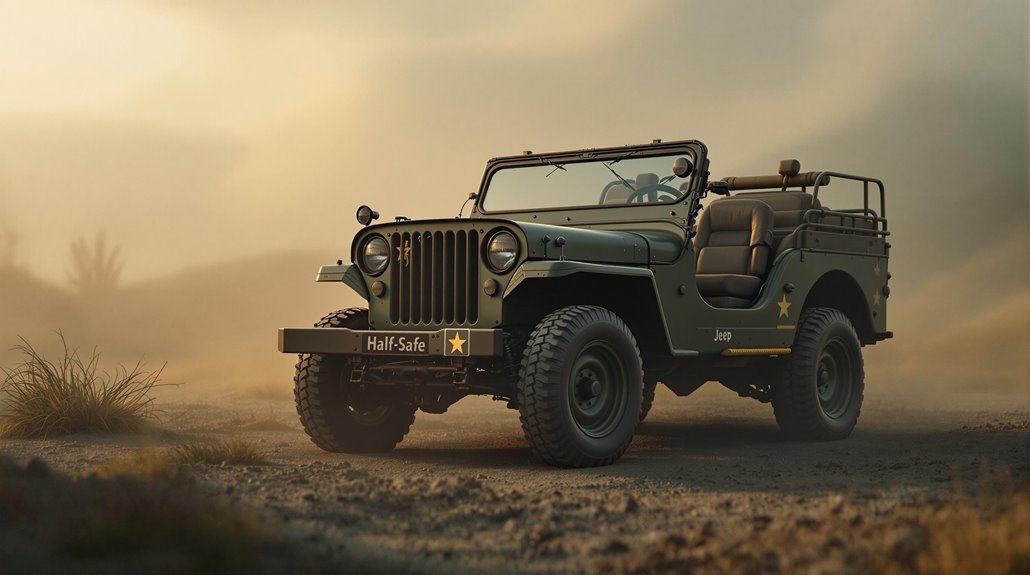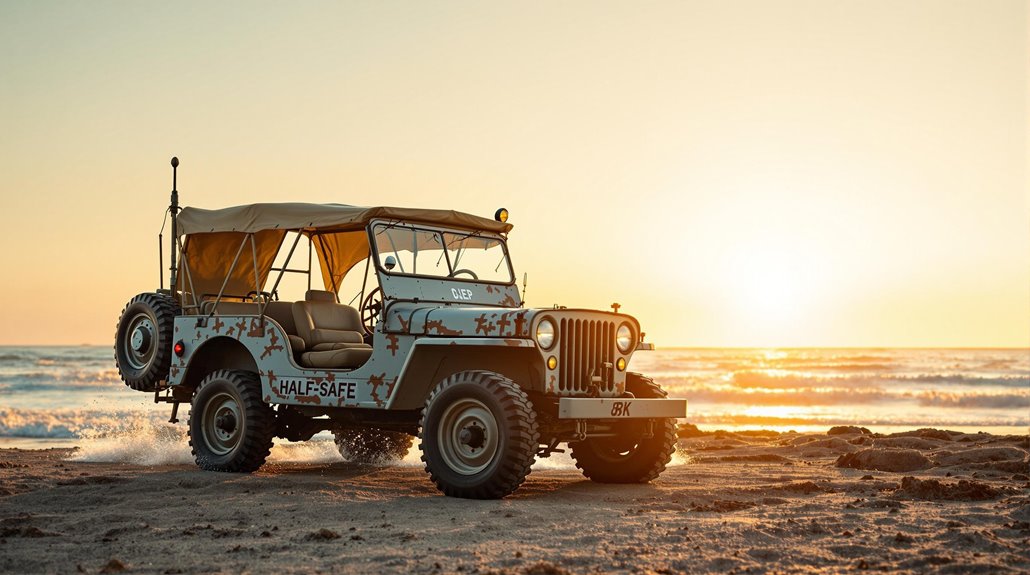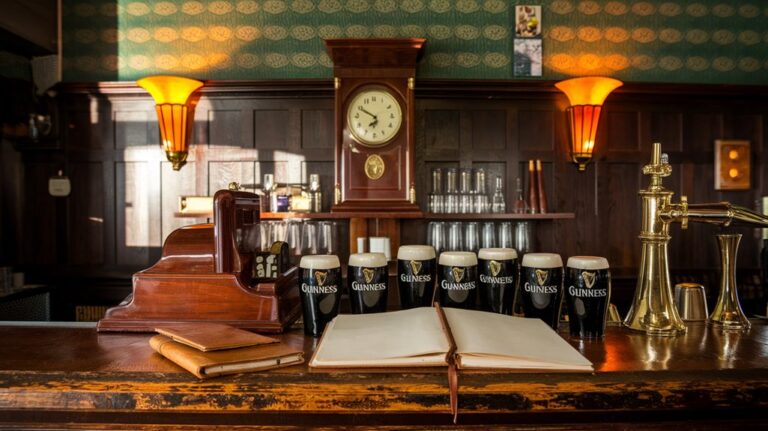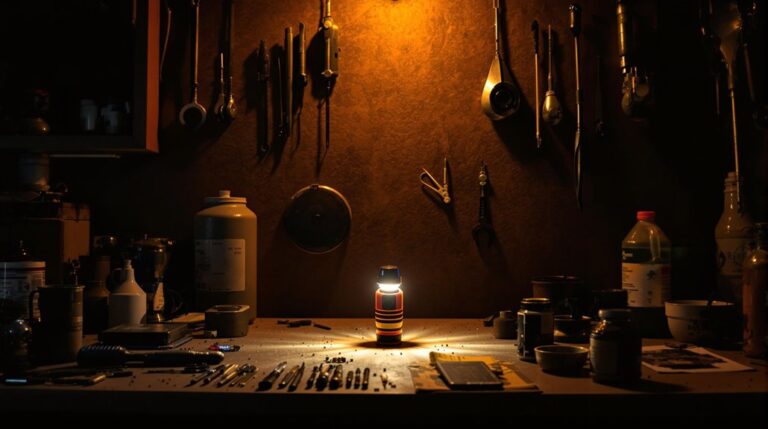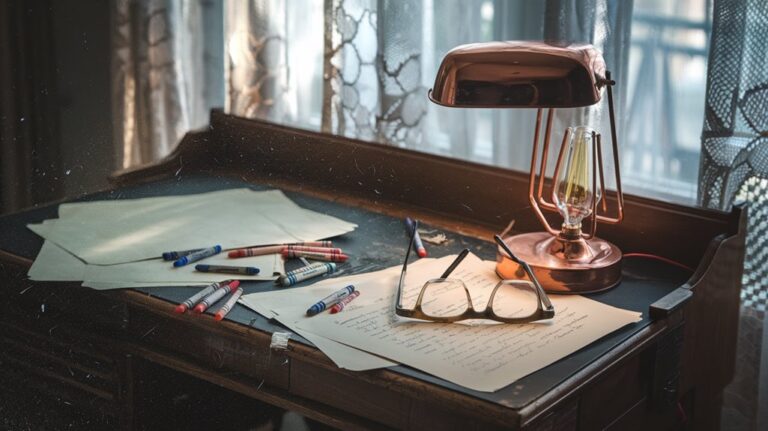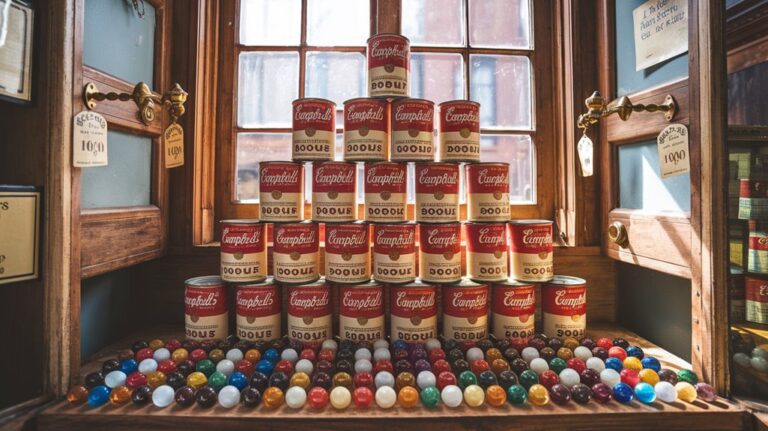Half-Safe: The Amphibious Jeep That Circled the World
You've probably never heard of Half-Safe, but this modified amphibious jeep accomplished what most would consider impossible. In 1947, Ben Carlin initiated a journey that would span eight years and 39,000 miles, crossing oceans and continents in a vehicle that shouldn't have survived either. While modern adventurers rely on specialized equipment and satellite navigation, Carlin's audacious feat with a surplus military vehicle remains unmatched—and the full story will challenge everything you think you know about human perseverance.
The Visionary Behind Half-Safe
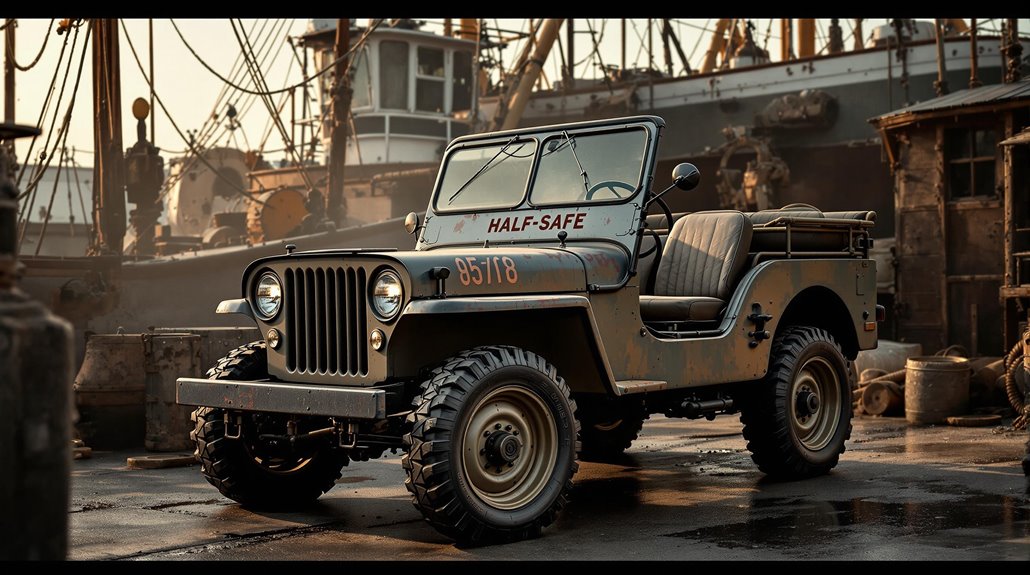
While many adventurers dream of circumnavigating the globe, few possess the relentless determination of Frederick Benjamin Carlin, an Australian mining engineer who turned his audacious vision into reality.
Born in Western Australia in 1912, Carlin's adventurous spirit emerged early through his mining engineering studies and work in the Goldfields.
After emigrating to China in 1939, his life took a dramatic turn when he joined the Indian Army Corps of Engineers during World War II.
It was during his military service that his visionary mindset sparked – upon discovering a Ford GPA in an army vehicle lot in India, he conceived the ambitious plan to circle the world in an amphibious vehicle.
The GPA had proved valuable during wartime, with Ford producing 13,000 of these unique vehicles before many ended up in surplus.
He purchased the vehicle that would become Half-Safe for US$901 at auction in Washington, D.C.
Despite Ford's rejection and numerous setbacks, Carlin's stubborn nature and unwavering resolve drove him to pursue his dream, even as his wife departed mid-journey.
Engineering a World-Conquering Vehicle
Turning Carlin's dream into reality demanded extensive modifications to a standard Ford GPA amphibious jeep. The original vehicle design, which struggled at just 3 km/h in water and proved difficult to maneuver, required a complete overhaul to achieve true ocean-going capability.
You'll find the most significant changes in Half-Safe's extended hull and enclosed cabin, which transformed the open military vehicle into a seaworthy craft. Like its Ford GPA predecessors used in WWII, the amphibious capability was enhanced through streamlined bow modifications and waterproof neoprene coating. A custom-designed rudder and propeller system enabled precise navigation through ocean waters.
To support long-distance travel, the team installed a massive 735-gallon fuel capacity system and aircraft-grade navigation instruments. They also added a sleeping cot and two-way radio for extended journeys.
While these modifications tripled the vehicle's weight to three tons, they proved essential for its remarkable 38,987-mile overland and 11,000-mile maritime journey.
Surviving the Atlantic Challenge
After five failed attempts to cross the Atlantic, Ben Carlin's determination finally paid off in 1950 with a successful 32-day voyage from Halifax to the Azores.
Despite implementing essential safety measures like increased fuel capacity and emergency radio systems, you'll find his journey was far from smooth sailing.
The crossing exposed him to life-threatening challenges, including carbon monoxide poisoning that caused severe hallucinations and a 60-degree navigational error.
When his propeller bearing welded itself, he drifted aimlessly for ten days. To survive, he fished daily, performed mid-ocean engine repairs, and relied on aircraft instruments for guidance.
Even with frequent radio contact losses and constant engine troubles, Carlin pressed on. His wife Elinore accompanied him on honeymoon during this extraordinary maritime adventure.
After reaching the Azores, he continued to Morocco, completing his Atlantic conquest three months after departure. The journey was inspired by his wartime experience with an amphibious Jeep during WWII.
Eight Years Across Five Continents
Once Ben Carlin conquered the Atlantic, his global odyssey shifted into high gear across five continents.
You'd find him traversing treacherous overland challenges across 39,000 miles of diverse terrain, from the scorching Middle Eastern deserts to dense Southeast Asian jungles. His modified Jeep tackled everything from the Bosphorus crossing to the perilous roads of Persia. The journey took a personal toll when his wife Eleanor filed for divorce in 1956. Having spent a year preparing the vehicle, Carlin's meticulous planning paid off during these challenging segments.
The maritime logistics proved equally intimidating as he sailed 11,000 miles through multiple ocean passages.
You can trace his route from the Bay of Bengal to the Chinese coast, eventually reaching Japan before the final push to Alaska. Over this eight-year journey, he'd visit 38 countries, spending $35,000 while constantly stopping for repairs and fundraising.
His 200-gallon fuel capacity helped him tackle vast distances between resupply points.
The Lasting Impact of an Impossible Journey
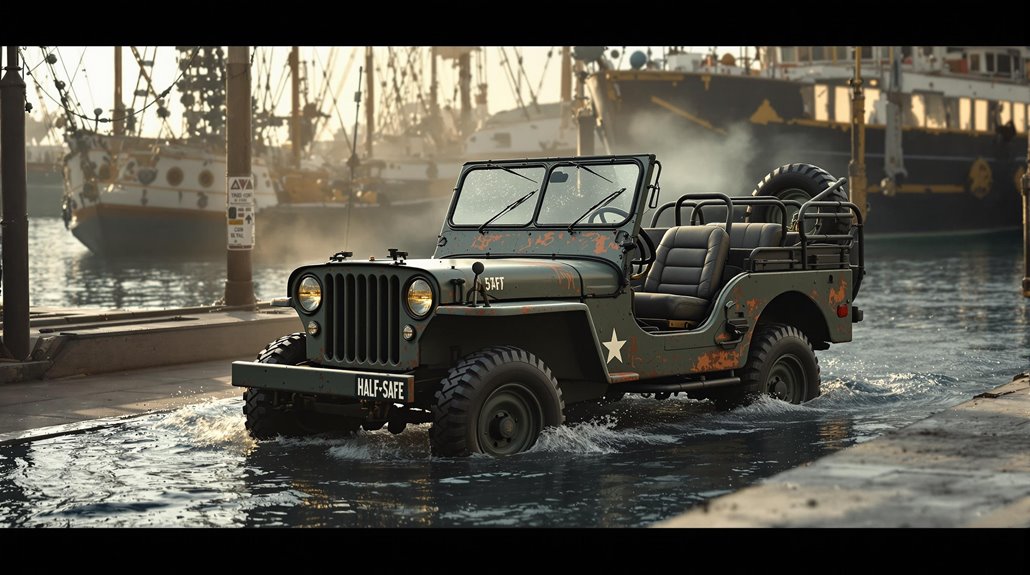
The audacity of Ben Carlin's global circumnavigation stands as a demonstration to human determination that's never been replicated.
Over 60 years later, you won't find another amphibious vehicle that's matched this incredible achievement, crossing both land and sea to circle the globe.
The journey's cultural significance extends far beyond the mechanical feat.
His incredible expedition covered 9,600 nautical miles across ocean waters while navigating through various countries and terrains.
You can trace the influence of Half-Safe in everything from modern expedition vehicle design to the way we think about unconventional travel.
While technological advancements have made vehicles more capable than ever, no one has attempted to repeat Carlin's ambitious route.
 ten-year odyssey in 1948, though she would later leave the expedition.
ten-year odyssey in 1948, though she would later leave the expedition.
Today, his modified Ford GPA rests in Western Australia, serving as both a symbol of human ingenuity and a reminder that sometimes the most improbable dreams are the ones worth chasing.

